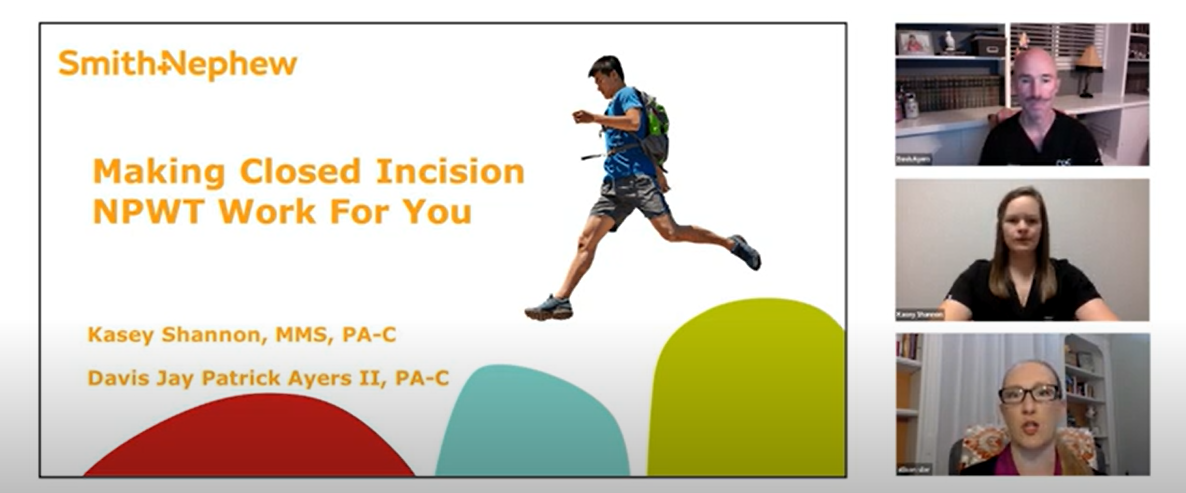The number one reason for unplanned readmission following surgery in the United States is surgical site infections1. In this webinar, you’ll hear about a solution:
- Shown to protect closed incisions while also helping prevent the incidence of surgical site infections, dehiscence and postoperative seroma2
- Patient-friendly device that’s convenient and discreet with high satisfaction rates3
The PICOTM System is an incisional negative pressure wound therapy device and dressing, and the only system that is indicated to aid in reducing the incidence of deep surgical site infections for high risk patients. It works by applying compression to not only the closed incision but also the entire zone of injury4 while providing a barrier against contamination,5 reducing the risk of maceration6 and more.
The webinar features two orthopedic physician assistants who see the positive benefits the PICO System delivers for total joint arthroplasty patients firsthand.
- Zmistowski, B., et al. Unplanned Readmission After Total Joint Arthroplasty: Rates, Reasons, and Risk Factors. 2013
- Saunders C, Nherera LM, Horner A, Trueman P. Single-Use negative-pressure wound therapy versus conventional dressings for closed surgical incisions: systematic literature review and meta-analysis. BJS Open. 2021;0(0):1 – 8.
- Hurd T, Trueman P, Rossington A. Use of a portable, single-use negative pressure wound therapy device in home care patients with low to moderately exuding wounds: a case series. Ostomy Wound Manage. 2014 Mar;60(3):30-6.
- Sugrue, Michael et al. 2016. “World Union of Wound Healing Societies (WUWHS) Consensus Document. Closed Surgical Incision Management: Understanding the Role of NPWT.” Wounds International.
- Smith & Nephew February 2011.Bacterial Barrier Testing (wet-wet) of PICO dressing with a 7 day test duration against S. marcescens. Internal Report. 1102010.
- Hudson DA, Adams KG, Van Huyssteen A, Martin R, Huddleston EM. Simplified negative pressure wound therapy: clinical evaluation of an ultraportable, no-canister system. Int Wound J. 2015;12(2):195-201.

